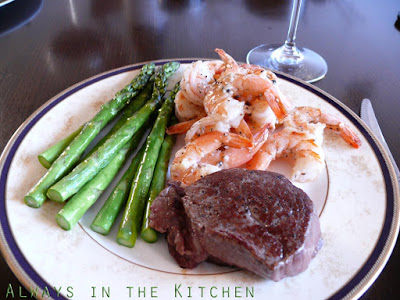
These were intensely, astoundingly, beefy. I got the idea from Jennifer McLagan's book "Odd Bits" where she exhorts the reader to make burgers entirely of heart, but for my inaugural attempt at cooking beef heart I decided to go with her further suggestion of cutting the heart 50/50 with non-organ muscle meat. She suggested brisket, but, based on the availability of the day, I went with bottom blade. For four patties, I used 250 grams trimmed heart, and 250 grams bottom blade, making each patty roughly a quarter pound.
I do not have a meat grinder, which is the only reason that it took me this long to make these. However, I cribbed from Alton Brown's instructions for making ground meat using a food processor, and that worked incredibly well:
Heart & Blade Burger Patties
Prepare the beef heart by trimming any muscle sheath, silverskin, tendons, or veins that may be clinging to the outside. Using a chef's knife, dice the meat into short, thick strips about 5 centimetres long. Next, trim and dice the blade meat into the same sized pieces.
Place the meat in a metal pan in the freezer for about 20 minutes, so that the meat begins to freeze and stiffens, but is still somewhat pliable.
Scrape the meat off of the pan into a food processor fitted with a metal blade, about 250 grams at a time - you don't want to overload the machine. Pulse the processor's blade repeatedly until the mixture begins to look like ground beef. Empty the processor, and repeat until all of the meat is chopped.
At that point, I put all of the meat together in the processor, added a tiny dribble of olive oil, and gave it another few pulses, simply to integrate it into a single mass and make sure there was enough fat to keep the meat from drying out.
Remove the metal blade and season to taste. We wanted to go with simple, almost stark burgers, so that we could really taste the meat. We used only a good pinch of kosher salt, but you could season these any way that you like to season your burgers.
Next I turned all of the meat out onto the counter, and shaped the mass of fluffy meat into four patties, which we fried over medium-high heat in a little butter (you could also use olive oil, of course). I worried that the patties might not hold together nicely, but they did. I was struck by how dark a red they were - lots of iron, for sure. These patties are quite lean, because heart meat is inherently lean. I patted them out quite thinly, because I wanted good bun coverage, but a thicker patty would work fine, too. If you're making them very thick, you might want to poke a hole through the centre to speed up and even out the cooking process, but that's up to you.
Now, I won't lie to you: there is a faint trace of gaminess, of "organ meat flavour" that one gets from the heart, but it is quite mild compared to, say, liver or kidney, and the overall effect is so overwhelmingly meaty tasting that the general impression that you get when biting into your burger is simply that of beef (and rightly so). I suspect that the all-heart burgers would be a little gamier, which would certainly be fine with me, but these were a wonderful introduction into cooking beef heart. Piled up onto a bun with all of the fixings (not pictured, sadly, because we fell on the finished burgers ravenously, and I forgot to take pictures), it made a delicious dinner.
So, what's next? All-heart burgers? Heart Loaf? "Heart"y Meatballs? There seem to be an awful lot of options, and I'm looking forward to further experimentation.

































